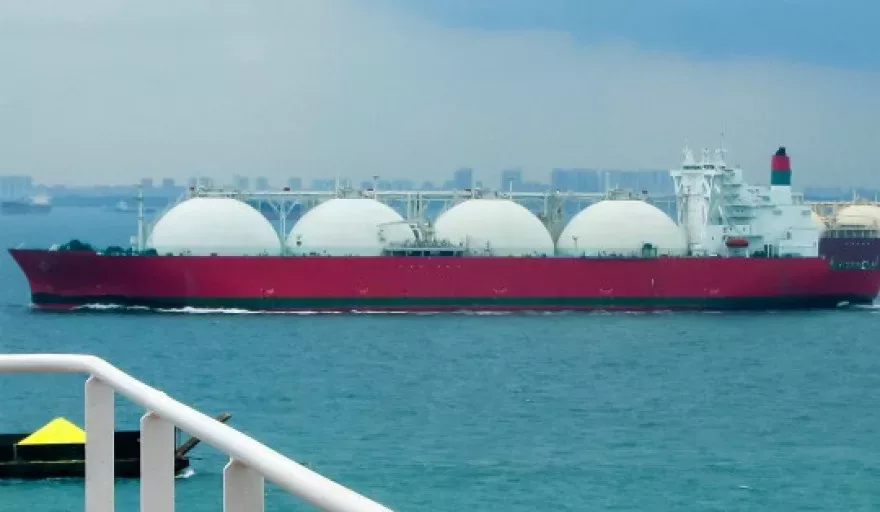As the demand for gas grows, the challenges of supply also increase. Key questions include, who will provide what to whom? Pipeline gas or LNG? And from which supplier?
Natural gas is the fastest growing fossil fuel globally with LNG playing a major part in the supply of this increasingly important energy source. LNG supply growth has quadrupled since 1995; fuelled predominantly by growing demand from Asian economies. As a result, it has doubled its share of the international natural gas trade and triggered a significant increase in export capacity from producers including Qatar, Australia and the USA.
Analyst, Wood Mackenzie forecasts global gas demand surging by as much as 41 percent over the next two decades, with LNG at the forefront of this new global ‘dash for gas’ as governments seek cleaner energy solutions to meet national energy requirements. The investment needed in driving such expansion of the global gas and LNG industry could reach a dizzying US$9 trillion, with most of that earmarked for major new infrastructure.
During the recent Gastech 2018 Governing Body meeting in London, discussion focused on how the world was currently experiencing a challenge between international gas producing countries to determine who would ultimately take the spoils and lay claim to the title of ‘world’s most influential supplier’.
Europe, China and India are among the key theatres of the global gas race and there is clear competition between producers in North America, Australia, Qatar and Russia; with their targets importers of LNG or pipeline gas, and each looking to project their energy exports throughout the world.
The war on pollution
China has led the charge in the move to natural gas, as a result of initiatives from President Xi Jinping. When he came to power in 2013, he set about making drastic changes to the country’s burgeoning pollution problems, epitomised by his “war on pollution”.
As a result, emissions from energy use have declined for two years consecutively, and many coal-powered generators are either being shut down or replaced with highly efficient and less polluting clean energy alternatives including wind, solar and natural gas.
Consequently, the share of coal used in China’s overall energy consumption is expected to fall from around two-thirds in 2015, to less than 45 percent by 2035, with its consumption of natural gas expected to almost double to 11 percent in in the same period.
In October last year, Chinese gas imports reached 3.4 mmt, and there was a rise of more than 21 percent in the average LNG price for cargoes delivered to China and other Asian countries including, Japan, South Korea and Taiwan; the biggest monthly gain since November, 2016.
The global energy industry has been completely shaken by China’s LNG industry advancement at what can only be described as ‘an unstoppable pace’.
Jinping’s Government is targeting gas to make up 15 percent of the country’s energy mix by 2030, up from five percent in 2015. To put this into context, an additional 100 mmt/year of LNG demand from China would be equal to an increase of more than 20 percent in total global LNG demand in 2030.
Currently, the five-year average growth rate of the domestic LNG production capacity is 36 percent and that of the LNG imports is 15 percent. Domestic production reached 10.1 mmt in 2017, up 28 percent from 2016, and that of import reached 38.3 mmt, up 43 percent from 2016.
Indeed, China’s long-term growth potential remains considerable, despite recent downward revisions. Chinese gas-into-power demand is set to grow 366 percent from 2016 to 2035, as the country becomes the world’s largest importer of LNG, overtaking Japan whose gas-into-power demand is to fall 33 percent as its nuclear fleet ramps up again.
The recent US$250 billion US-China deal will act as a green light for China to continue buying US spot LNG and will likely trigger another wave of investments in US LNG production projects later on. But market conditions could constrain this – there could be times when Chinese firms find it more economical to import through the traditional routes of Australian and Qatari LNG, or buy Russian gas via pipelines.
Cost (and infrastructure) is king
Infrastructure will play a major role in the use and uptake of natural gas, and, as two of the world’s key players in the natural gas industry, India and China both struggle from challenges in this area. However, Chinese banks are now offering loans for companies to help facilitate this growing need.
The total value of loans provided from 2014 to 2016 exceeded US$13 billion, clearly showing the Chinese Government’s commitment and drive towards LNG development and December, 2017 saw the Asian Infrastructure Investment Bank (AIIB) approve its first loan in China, a US$250 million funding for a natural gas project. The investment is expected to connect 216,750 households across 510 villages to the natural gas distribution network.
While the changing face of the modern energy industry means that questions still remain around the demand and supply of natural gas, it’s clear that China will play a key role in its future.
China’s expanding gas and LNG markets will be a key theme to discuss at the 2018 Gastech Exhibition and Conference in Barcelona.
This year’s Gastech, the global exhibition and conference at the forefront of the international gas, LNG and energy industries, will bring together professionals from across the industry to exchange strategies for driving forward the ever-evolving global gas industry.
Held from 17-20 September at the Fira Gran Via, Barcelona, the event is uniquely placed at the heart of the conversation, navigating the next steps the industry takes amongst discussion and debate around advances in technology, efficiency and market fluidity and the competitiveness of natural gas.
For more information: http://www.gastechevent.com
By Gavin Sutcliffe, Director of Gastech Governing Body




































